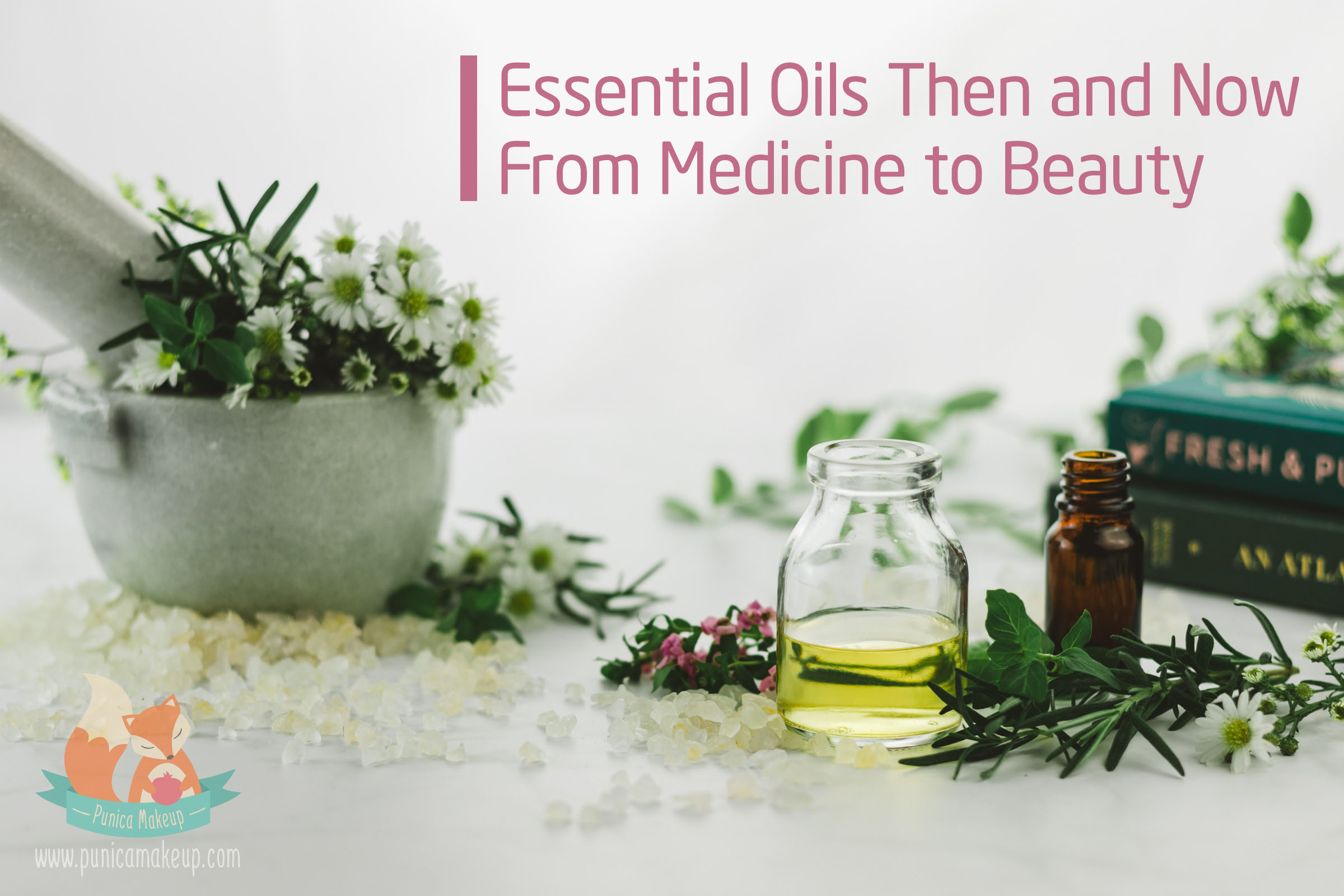Table of Contents
Natural beauty is an intriguing and enchanting world. These days, people have used plant-derived ingredients for different purposes, since their potent properties have been renowned for ages. The little me listened to my grandma raving about how wonderful botanicals are for our physical and mental well-being by inhaling and ingesting.
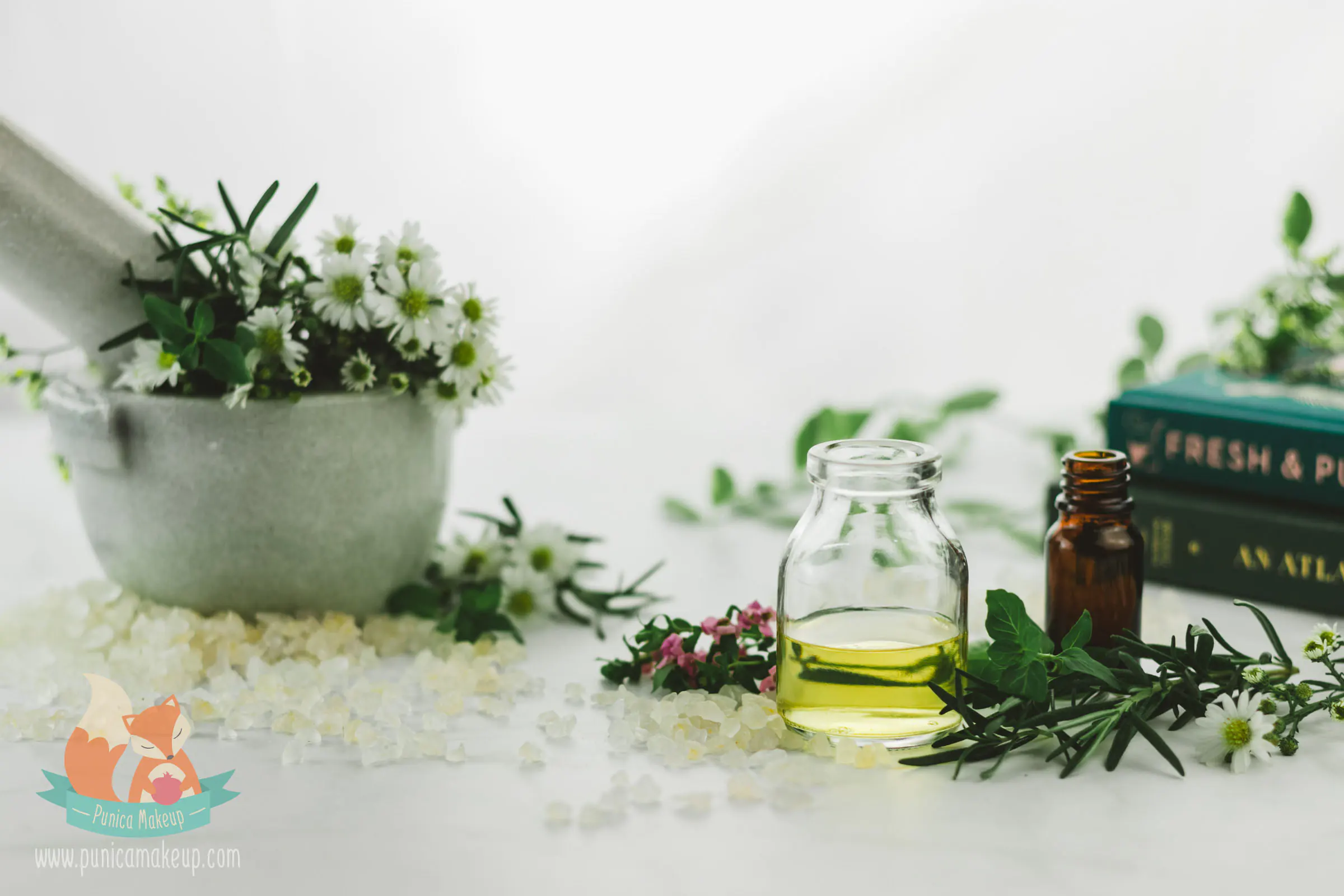
We can even get the most out of it with essential oils which earn big accolades for curative, uplifting, culinary and aromatic benefits. Plus, they have long been powerful beautifiers. Let’s get down to answer your concerns in my article, Essential Oils – Then and Now from Medicine to Beauty.
1. Time-tested Essential (Aromatic) Oils
Botanicals have existed among ancient civilizations for thousands of years. The history of aromatics was linked closely with the history of herbal medicine. Dating way back over 18,000 years, the first trace of plants and herbs usage was imprinted on cave paintings in the Dordogne region of France.
Ancient Egyptians pioneered the large-scale culture using essential oils for cosmetology, aromatherapy and medicinal purposes, aside from sacred rituals, mummification and anointment. Living along the Nile River, which delivered rich, fertile soil across the desert to cultivate Egyptians’ botanical treasures.
One of the first extractions came from lotus flowers with the enfleurage method by using animal fat as a solvent to obtain essences. As early as 4,500 BC, exotic oils were more valuable than gold and notably used to make medicines, fragrances and incense.

The smoke of burning incense imparted the association between prayers and deities or mundane and divine in religious ceremonies. Slathering aromatic oils to embalm dead bodies symbolized the afterlife. Likewise, Pharaohs and Egyptian royalty were entombed with alabaster jars of essential oils.
As far back as 1.500 BC, Ebers Papyrus was the oldest knowledge in Egypt, including 800 plants and aromatics, for example, Jasmine, Rose, Juniper Berry, Myrrh, Marjoram, Frankincense, Olibanum, Cardamom, Cinnamon, Sandalwood and Lemongrass. Frankincense, Cinnamon, Sandalwood, Myrrh and Juniper Resins were very popular to produce a variety of medicinal potions, aromatic preparations and cosmetics.
In addition, the Egyptian temple priests, who could be considered doctors and perfumers, were experts at creating the concoctions with the aromatics. They worked as moisturizers to nourish skin and protect it against the aggressive, arid climate of the desert. Not to mention the fact that the legendary seductive Cleopatra was well-known for her unusual beauty routines with essential oils, like Neroli, Cypress, Frankincense, Rose and Myrrh.
She indulged in a sensory spa, added with the Dead Sea Salts, fatty oils, essential oils and scented flowers. That helped alleviate stress and give her a glowing complexion. Cleopatra’s youthful look stemmed from fermented milk baths blended with essences of jasmine, myrrh and rose. The beauty also used exotic oils as perfumes to reduce body odours.
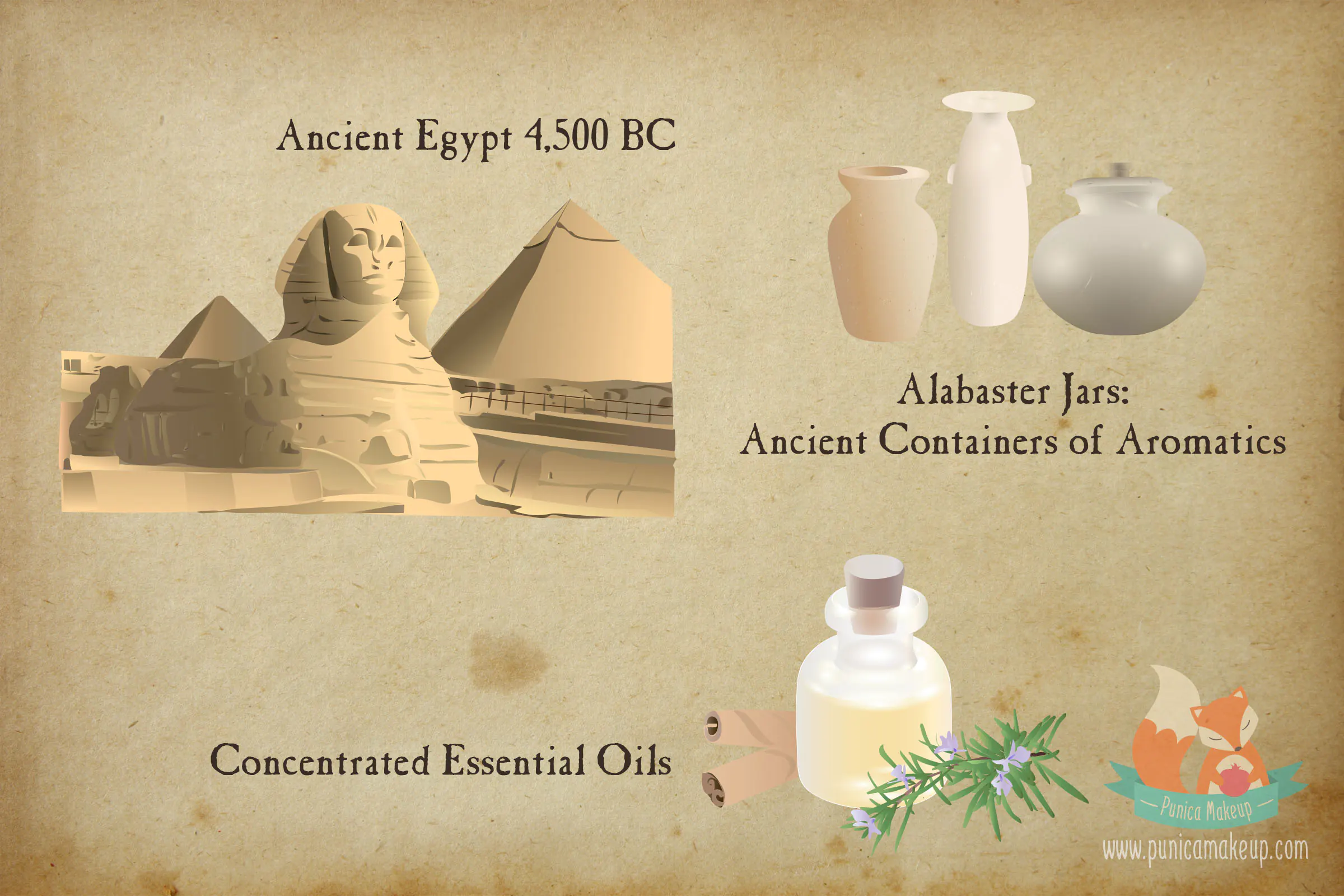
Greeks and Romans then soon adopted the wisdom of Egyptians within 400-500 BC Greek soldiers brought ointments of myrrh into the battlefield to combat infection. Hippocrates (460-377 BC), the Greek physician and father of Western Medicine, documented more than 300 remedial plants. He followed his doctrine of Four Humors, indicating the metabolic agents of four elements in the human body (blood-air, Phlegm-water, Yellow Bile-fire and Black Bile-earth).
Hippocrates strongly believed that the hygiene of aromatic massage and bath every day awakened and expedited the healing process of the human body. He explored the efficacy of essential oils for fumigation (disinfection) and prescribed aromatic treatments to his patients.
Likewise, Claudius Galenus (130-210 AD), another Greek physician and philosopher, significantly contributed to the vast knowledge of medicinal plants and encouraged the use of aromatic oils. At the age of 28, he was working as a physician to Roman gladiators. Not a single gladiator died for battle wounds while under his care.
Galen’s talent was known and he even came to treat the Roman Emperor, Marcus Aurelius. Then, he wrote tremendously the theory of herbal medicine, known as Galenic in modern medicine.

Apparently, Roman culture was remarkably influenced by Greek philosophy. A lot of practitioners tailored their treatments, based on the books of Hippocrates and Galen. Lavish baths and massages with aromatics were ingrained in the daily routine of Romans. They even scented their hair, bodies, clothes and bedding. After the Roman Empire collapsed, some physicians escaped and managed to carry the texts, which made their way to Persia. The books were then translated into different languages.
Avicenna (980-1037 AD), a Persian physician and philosopher, wrote treatises on the properties of herbs and plants. His “Canon of Medicine” is popular as a medicinal encyclopedia in European colleges. Also, he was the first person who discovered the distillation process to derive the essences. His extraction method is still useful these days.
Around the time of Egypt, China and India were also thriving on the use of essential oils. India was evolving from a lifelong history throughout over 3,000 years of incorporating exotic oils into elixirs for body, mind and spirit.
Ayurveda embodied the centerpiece of Indian holistic medicine with the Vedas as the nation’s oldest texts, describing 700 herbs and aromatics. For instance, it included cinnamon, ginger, myrrh, coriander, spikenard and sandalwood. Hippocrates’ 300 medicinal plants were additionally obtained from the Ayurveda.
In China, aromatics were initially found during the reign of Huang Di, the Yellow Emperor. That was between 2697-2597 BC when herbs and plants played an integral part in Chinese traditional medicine and beautification. His book, “The Yellow Emperor’s Classic of Internal Medicine,” captured plenty of essential oils as a good reference for practitioners to this day. FYI, China has become one of the World’s largest nations producing essential oils.
2. Dark Ages and Be Reborned to Rise
Crusading Knights and their armies learnt aromatics and medicinal plants, whilst visiting the Middle East. They wore the perfumes and communicated the knowledge throughout Western Europe.
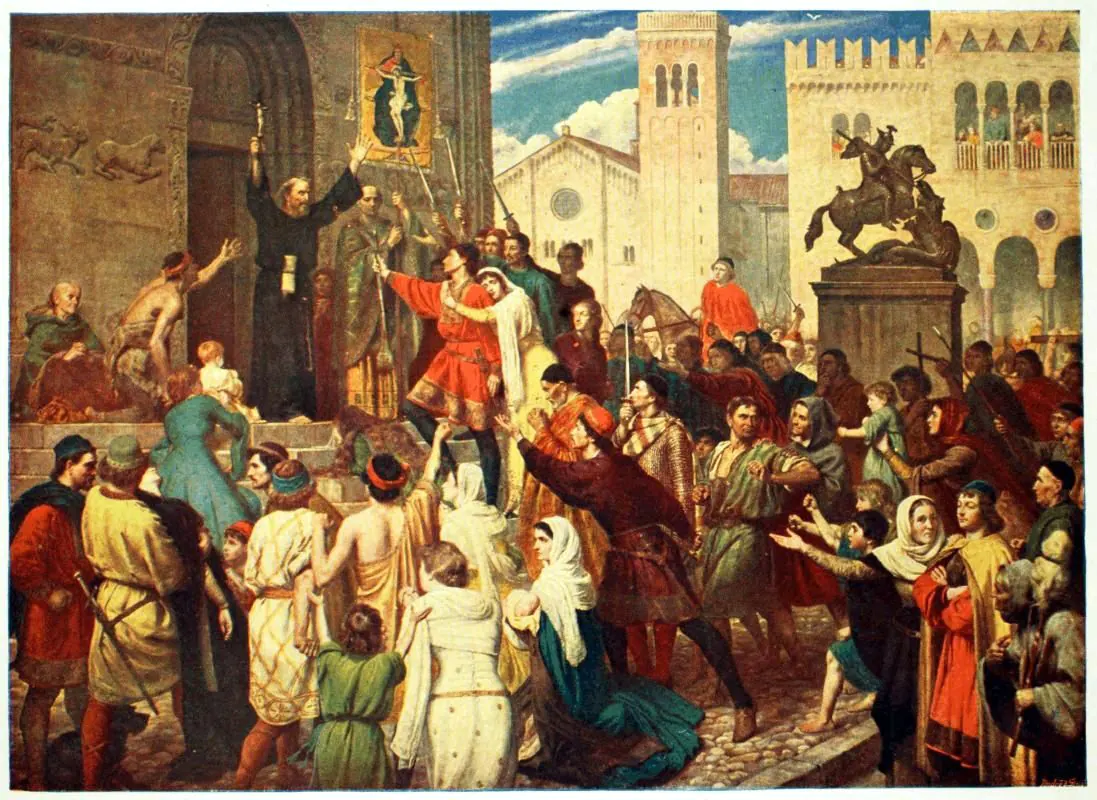
During the Medieval Period, exotic oils and herbalism encountered a drastic plunge as a result of the religious persecution, heralded by the fall of the Roman Empire. Catholic Church denounced herbs and aromatics. Bathing with essential oils would be accused of sin or witchcraft, though they still stayed around only for their pleasant scents. Plus, Hippocrates’ knowledge was prohibited and forgotten. The lack of cleanliness ended up provoking plagues and killing a lot of people.
Thankfully, regardless of the suppression of the communities, some monks sacrificed themselves to secretly maintain their wisdom.
By the 17th century, the writings about herbs and essential oils came back to be widespread. Nicholas Culpeper (1616-1654), an English botanist and herbalist, contributed to sparking the rebirth of interest in essential oils and plants. His “The Complete Herbal” remains one of the most worthwhile resources nowadays, it describes more than 400 herbs and their uses.
Before the 19th century, a majority of pharmacopoeia in France, England and Germany provided botanical and aromatic prescriptions to different kinds of illness. Despite that, in Germany, 1899, Aspirin was made containing the pain-relieving agents of traditional plants, it was easier to use at a much lower cost. So, aromatic medicine became less favoured.
In the south of France, flower-growing areas supplied a large number of raw materials to French perfumers. Meanwhile, Tuberculosis was very common, but those who worked among plants and aromatics still stayed generally healthy. This triggered the first lab test of the antimicrobial properties of essential oils in 1887.
René-Maurice Gattefossé (1881-1950) was a French cosmetic chemist and the third child born to Louis Gattefossé, the founder of Gattefossé Establishments. To inherit his family business of manufacturing essential oils, petroleum oils, raw materials of fragrances and drugstore products, he devoted his life to research and study essential oils.
In 1910, because of a laboratory explosion, René-Maurice suffered severe burns on his hands and arms, covered with gas gangrene. Susceptible to the rapidly developing infection by Clostridium perfringens bacteria. He quickly rinsed his wounds with lavender oil, it noticeably warded off the gasification of the tissue. Profuse perspiration and healing began the following day.
That accident might be his foremost acknowledging the antiseptic properties of essential oils. René-Maurice became the first who got the term “Aromatherapy” coined in 1928 and introduced the book titled “Aromathérapie, les huiles essentielles, hormones végétales” in 1937. He investigated the distillation methods of antiseptic plants and utilized essential oils to treat soldiers in military hospitals in World War I.
Additionally, there was Jean Valnet (1920-1995), a Parisian medical doctor and army surgeon, working alongside René-Maurice Gattefossé. He used essential oils as antiseptics to cure soldiers’ wounds during the Indochina war (1948-1959) with incredible success.
He then studied the anti-infectious properties of essential oils and lectured on the therapeutic benefits of the oils and botanicals, called Phytotherapy. His famous text, “the Practice of Aromatherapy,” achieved worldwide recognition. Jean Valnet also foresaw the danger of overusing essential oils.
Somewhere in Europe, Marguerite Maury (1895-1968), an Austrian-born Biochemist, developed her unique massage techniques to apply essential oils to skin. She had an enthusiasm for essential oils and carried out in-depth research about their effects on the nervous system and human health. Marguerite opened Aromatherapy clinics in Paris, Switzerland and England.
After walking through the profound history, unquestionably essential oils and plants have had a certain cachet to holistic well-being. We still keep immersing ourselves in essential oils these days and even, explore new ways to use them in beauty care.
Madame Micheline Arcier (1923-2006) was known as one of the true pioneers of aromatherapy. Inspired by Jean Valnet and Marguerite Maury, who helped deepen her knowledge about the medicinal terms of combining massage and essential oils. In the 1960s, she opened her own clinic in Knightsbridge, London.
Closed in 2009, yet three years later, Germaine Rich and Catherine Milne, who had worked closely with Micheline Arcier, took over the business and continue her legacy. Besides spa treatments, using Madame Arcier’s recipes, they observed that essential oils amazingly improved complexion and promoted its rejuvenation.
Germaine and Catherine have produced their skincare products for face and body, with her nourishing blends of essential oils and other natural ingredients. There are not any toxins, harmful preservatives, fragrances or artificial colorants.
From here, we could kick off another chapter of the craze for essential oils in the beauty community.
3. Extraction Methods
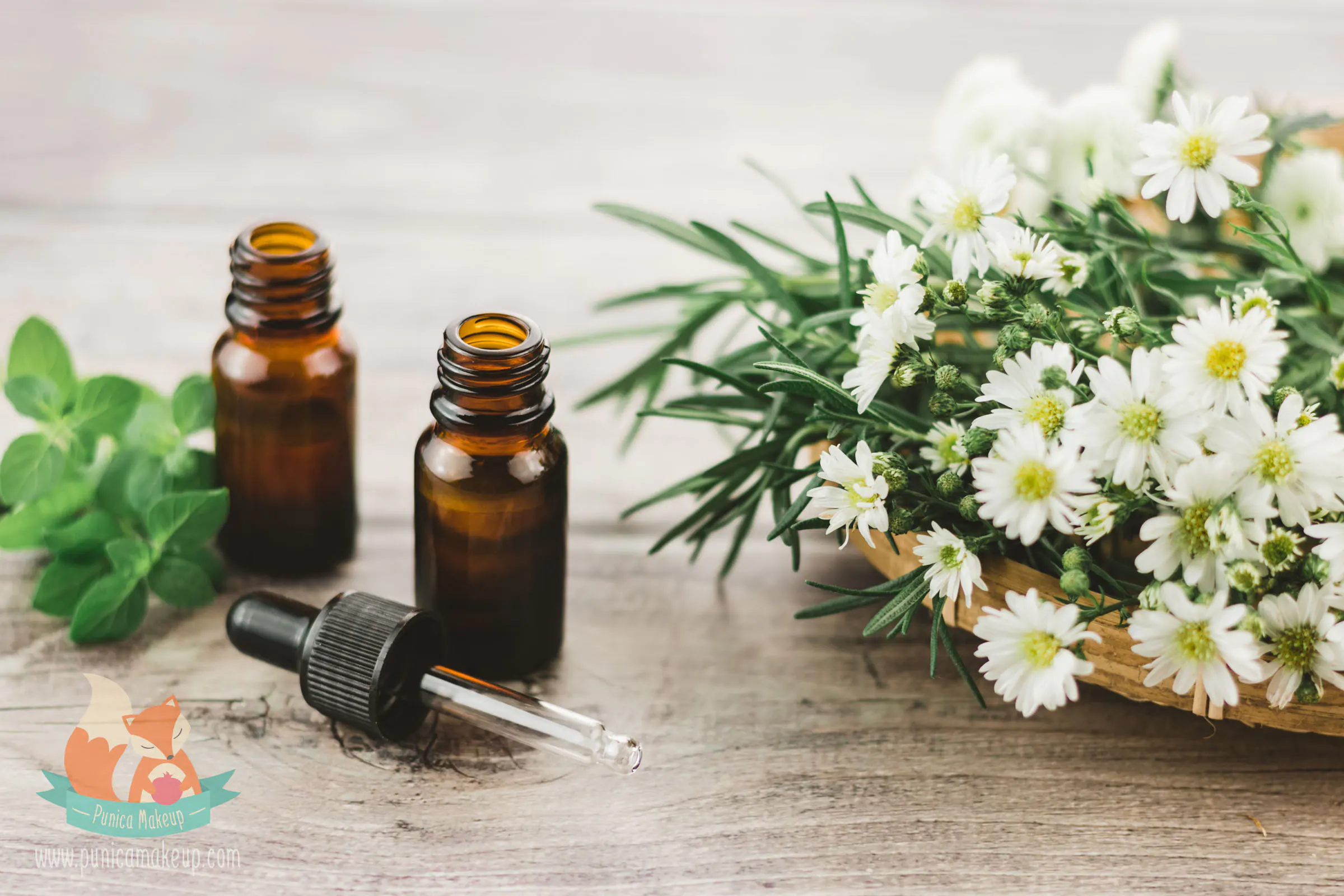
Let’s start over a bit with some definitions. What are essential oils? And how are they made? Essential oils are highly concentrated and volatile compounds found in plants, like stems, roots, bark, flowers, leaves and fruits, through more than one extraction method today.
Steam Distillation
Used to extract rose, lavender, lemongrass or tea tree oils. It’s a separation process by heating to purify and isolate temperature-sensitive materials, like natural organic compounds. Heated water is placed below to release steam, passing through the plant materials. This is aimed at heating and separating components at a temperature lower than the boiling points of the organic compounds in order to minimize their decomposition.
The steam helps vaporize the compounds, which are distilled. Next, there is a cooling process that condenses the vapor into a mixture of immiscible liquids (water and organics). The organics tend to float on top. And then, the purified essential oils will be obtained through an extra step, such as Decantation.
Expression or Cold Press
It is much simpler, it’s usually used to derive the citrus essential oils, which are vulnerable to heat. This is the extraction process of mechanically compressing the peel of citrus fruit to force the oil out.
Supercritical Carbon Dioxide (CO2) Extraction
The other is Supercritical Carbon Dioxide (CO2) extraction. Suitable for delicate plant materials whose organic compounds cannot survive through the distillation process. The method is clean, inexpensive and high quality, so it’s considered the most effective, widely used in cosmetology and pharmacology. Pressurize the CO2, to the extent that it’s “supercritical,” at which temperature and pressure exceed the critical point to maintain its fluid and gaseous states at the same time.
Next, it’s pumped into the container of plant materials. The liquid CO2 works as a tunable solvent to draw out and dissolve all of the organic contents, like pigment and resin. After that, the mixture is transported to the separator, where the CO2 will be transformed back to its vapor or gaseous state by releasing the pressure. That is inclined to remove the CO2 component and the leftover will be pure, concentrated essential oil.
4. Modern Time: Essential Oils in Beauty
When it comes to skincare, we need to be more thoughtful. Many of us may think that because they are natural without harmful chemicals, so it’s care-free to use all the way. But, that is not the case. First off, essential oils should be always diluted before applying topically.
Its high concentration tends to aggravate skin sensitivity, especially under the sunlight, called phototoxicity. I once mentioned this in my previous post of the 5 best essential oils for acne skin.

Joshua Zeichner, Dermatologist of Mount Sinai Hospital in New York City says that concentrated essential oil can cause serious irritation when applied to skin. Then, dilute it in a carrier oil, like coconut or argan oil. Plus, “phototoxic essential oils include bergamot [and citruses, like] lime and lemon, that should not be used at more than 0.5 percent on skin exposed to any amount of sunlight,” adds Robert Tisserand, an essential oil educator and aromatherapy expert in California.
Furthermore, each essential oil has its own benefits, cut out for some particular skin conditions. So, identify your skin type and pick the right formulas to ensure that the essential oil will safely take out your problems. According to the book, titled “An Atlas of Natural Beauty: Botanical Ingredients for Retaining and Enhancing Beauty,” written by Victoire de Taillac and Ramdane Touhami, tea tree oil, extracted from the leaves of Melaleuca Alternifolia tree in New South Wales and Queensland, Australia, is the all-time choice to treat acne vulgaris.
It’s a powerhouse of monoterpenes as antimicrobial, anti-infectious and anti-inflammatory agents to diminish breakouts as well as heal scratches and some minor wounds. Usually used in spot treatments or face masks for blemish-prone skin.
Lavender oil, derived from Lavandula Angustifolia flowers native to Europe, is packed with Monoterpenols and Monoterpenes. These agents provide anti-inflammatory and soothing effects. Recommended relieving wounds, burns and eczema. Some face masks are infused with two to three drops of lavender oil to not only purify skin but also keep flare-ups at bay. Or, add a few drops of tea tree and lavender oils to a small amount of vegetable oil to treat pesky zits.
Rosemary oil, extracted from Rosmarinus Officinalis leaves in the Mediterranean region, is known as a queen of them all. Rosemary contains natural astringent which helps refine skin and get rid of excessive sebum to mitigate congestion. Plus, its terpenes work as stimulants, improving blood circulation to reduce skin puffiness. Its cineole and camphor help even out skin tone.
More importantly, enriched with Rosmarinic Acid as a potent antioxidant, which dampens the appearance of aging signs as well as protects the skin against environmental stress. So, recommended for those who have oily, congested and mature skin types. In addition, rosemary oil is also an excellent antiseptic to prevent bad body odor due to the propagation of bacteria as well as lessen dandruff on the scalp.
Jasmine oil, derived from Jasminum Grandiflorum flowers, is an ideal essence for sensitive and even, mature skins. It tends to alleviate skin swelling, irritation and fatigue. Moreover, abundant in vitamin E as an antioxidant and emollient to revitalize skin protective barrier and increase its elasticity. Add four to five drops of Jasmine oil into a carrier oil and apply the mixture as a face mask, loaded with soothing, hydrating and age-defying agents.

Chamomile oil, extracted from Chamaemelum Nobile or Matricaria Chamomilla native to Europe, contains flavonoids and terpenoids as active components. It helps to calm down skin irritation and redness as well as brighten up the complexion. Possibly prescribed for patients with rosacea.
Add the oil to your baths, face masks or moisturizing cream. Also, Chamomile oil can be applied to hair to give sleeker and softer feels.
There are still more and more skin remedies with a variety of essential oils. Likewise, they are also used in mani-pedis to treat nail fungus. Just make sure that you have carefully researched the oils prior to having topical applications.
Hope the article is able to bring you thorough information about the history of essential oils and how they are used today for not only holistic healthcare but also beauty care. Please feel free to share your ideas and questions, I’d love to know. Thank you so much for your time and interest!
